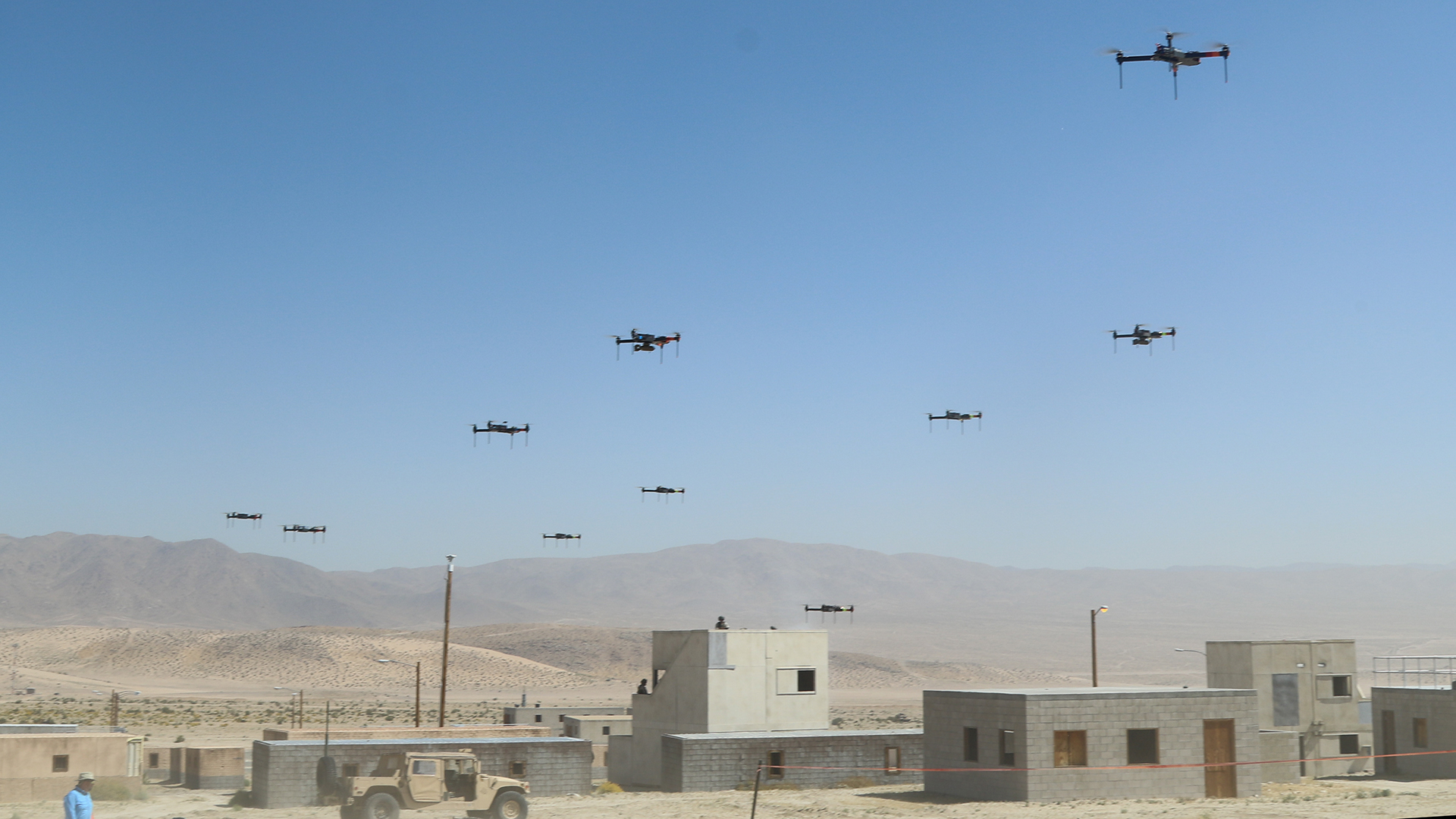President Joe Biden’s administration has released what it is calling the “first whole-of-government plan” to address the threat from unmanned aerial systems, or UASs, more commonly known as drones, on American soil.
The plan consists of eight recommendations the White House says would, if transformed into law by Congress, move to strengthen the Federal Government’s ability to protect U.S. airspace and safeguard its communication networks, critical infrastructure, and Americans’ privacy and safety. The publication of the plan follows several years of high-profile drone incidents that have made it clear that even small, readily-available drones can pose significant threats to the American homeland.
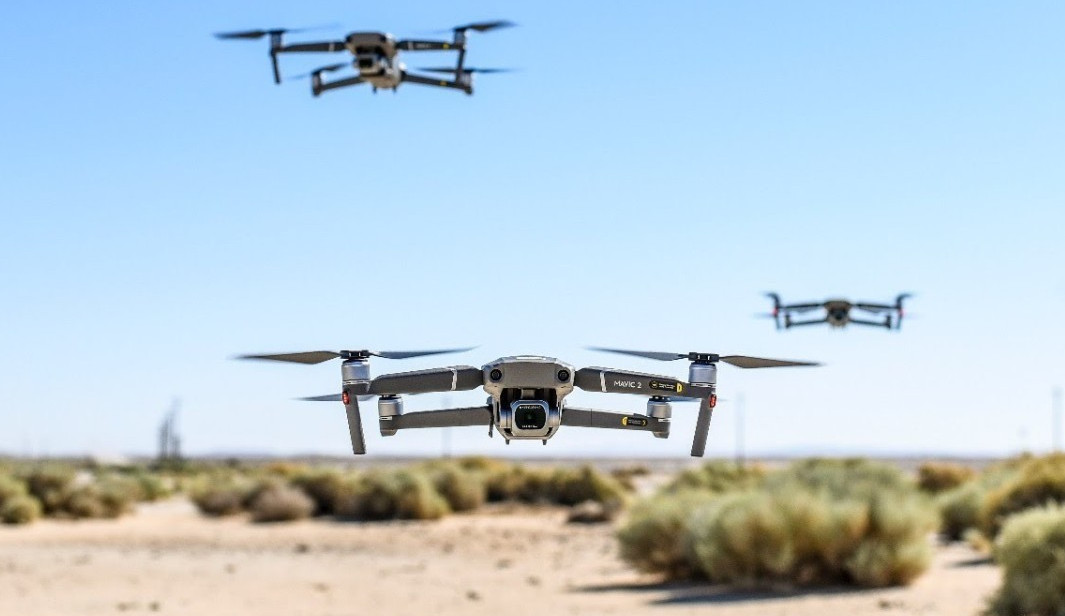
The list of recommendations is outlined in a statement titled “The Domestic Counter-Unmanned Aircraft Systems National Action Plan,” which was published by the White House on April 25. The document says that the Biden Administration is “calling on Congress to adopt legislation to close critical gaps in existing law and policy that currently impede government and law enforcement from protecting the American people and our vital security interests.”
The most comprehensive recommendation in the plan would reauthorize and expand existing counter‑UAS capabilities for the Departments of Homeland Security, Justice, Defense, and State, the Central Intelligence Agency, NASA, as well as state, local, and Tribal law enforcement agencies. As part of this recommendation, the White House would also create a program whereby non-Federal law enforcement agencies would be able to purchase anti-drone systems in order to protect their facilities.
The other seven recommendations can be summarized as follows:
- Establish a list of Federal Government-approved detection equipment to help law enforcement entities “avoid the risks of inadvertent disruption to airspace or the communications spectrum.”
- Create “oversight and enablement mechanisms” that would help critical infrastructure sites purchase approved counter-UAS equipment.
- Establish a National Counter-UAS Training Center in order to support training and interagency cooperation.
- Create a central UAS incident tracking database so that the Federal Government can better understand the threat drones pose domestically.
- Establish mechanisms throughout the Federal Government for coordinating research and development of UAS detection and mitigation technologies.
- Task Congress with establishing Federal standards and criminal statutes related to drone use and possible related crimes.
- Promote international cooperation on counter-UAS technologies.
In response to the plan’s publication, Secretary of Homeland Security Alejandro N. Mayorkas released a statement that says the plan will enable the Department of Homeland Security (DHS) and its partners “to have the necessary authorities and tools to protect the public, the President and other senior officials, federal facilities, and U.S. critical infrastructure from threats posed by the malicious and illicit use of unmanned aircraft systems.”
The Department of Justice (DOJ) likewise issued its own statement. It argued that “the threat posed by the criminal use of drones is increasing and evolving” and that “the department strongly supports the element of the National Action Plan incrementally extending relief from federal criminal laws to state, local, territorial and tribal (SLTT) law enforcement entities to use technology to detect, and in limited circumstances, mitigate UAS threats under appropriate controls and Federal oversight.”
This isn’t the first drone-related directive to come from the White House in recent years. In one of President Donald Trump’s final acts, he signed an Executive Order in January 2021 that instructed the Federal Aviation Administration (FAA) to update its policies related to the airspace above critical and sensitive infrastructure. The order also restricted the Federal Government’s use of drone technologies manufactured in China, North Korea, Iran, Russia, or any other “adversarial nations” defined by the Secretary of Commerce. This came out of fears that drones made in these nations could have security vulnerabilities ‘baked in’ to their hardware or software.
As many recent events have shown, there is a clear need for new legislation. The FAA has recorded approximately 10,000 drone-related incidents in the past five years alone, which we actually cataloged into an interactive database. Our database, which contains data similar to what the White House is proposing to gather, contains information such as the location and approximate altitude of UAS incidents, the locations of active nuclear reactors in the United States, and permits searching the FAA’s incident reports by keyword.
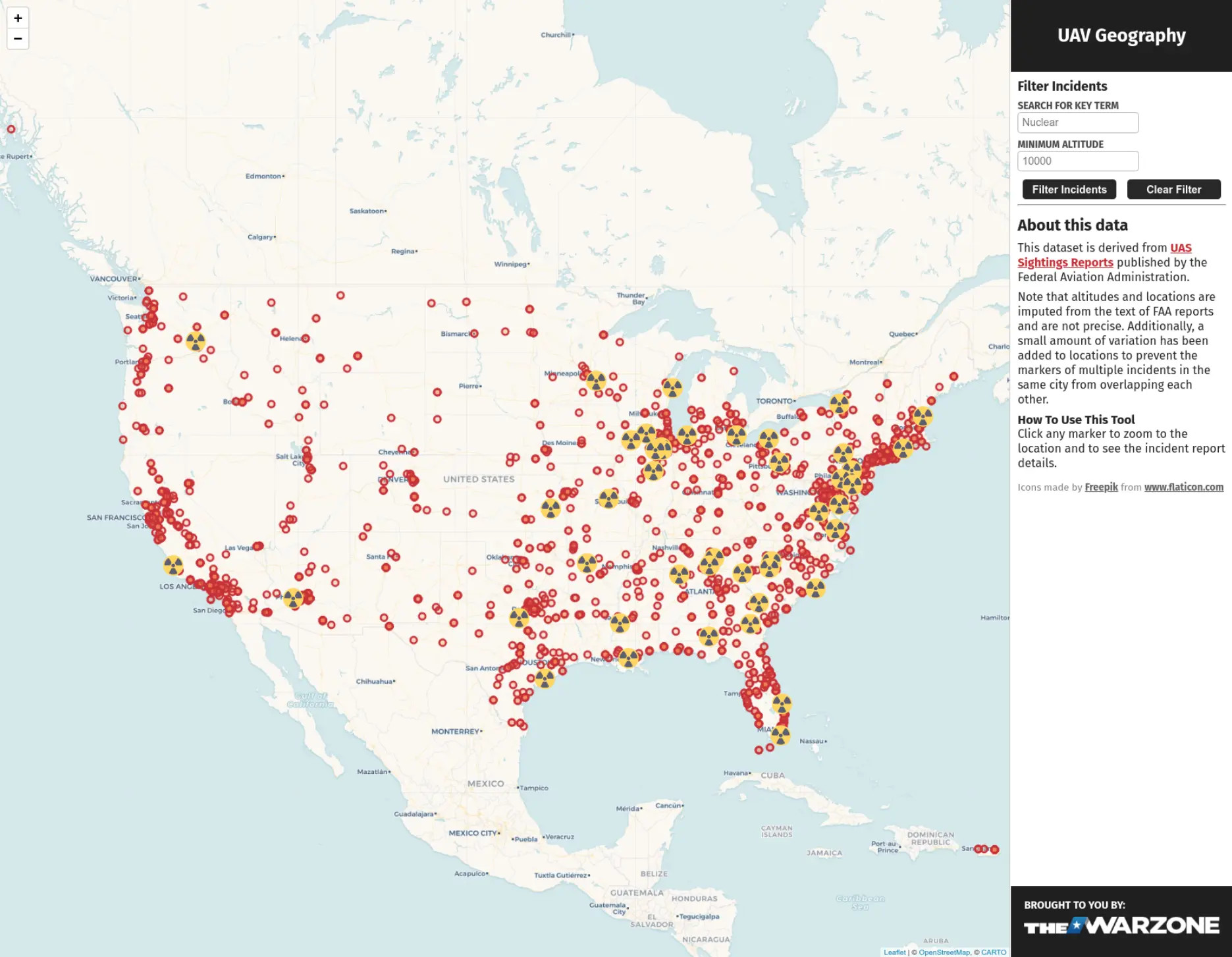
Some of these incidents have taken place above nuclear power plants, such as the “drone-a-palooza” the U.S. Nuclear Regulatory Commission (NRC) reported over Arizona’s Palo Verde Nuclear Generation Station in late 2019, as well other power grid-related infrastructure. In November 2021, an off-the-shelf DJI Mavic 2 quadcopter was discovered in what Federal authorities said appeared to be an attempted attack on a power substation in Pennsylvania. The drone was modified to carry a copper wire thought to have been added to disrupt the substation’s electrical operations.
Just when it comes to nuclear installations, the NRC reported some 57 drone incidents above various sites between 2015 and 2019. There have also been numerous incidents outside of the United States where unidentified drones have been seen over nuclear energy infrastructure, most recently in Sweden and the United Kingdom, further underscoring these concerns. While some U.S. nuclear facilities have finally deployed anti-drone systems, the White House’s latest anti-drone action plan makes clear there are still major gaps that need to be addressed.
While none of these incidents resulted in an attack or disruption to the U.S. power grid, it could only be a matter of time unless the White House’s proposals are taken seriously. When it comes to weaponizing commercially available drones, the barrier to entry is low and non-state actors around the world have demonstrated various worrisome capabilities in this regard. Armed low-end drones have been employed in conflicts from the Battle of Mosul in Iraq to the conflict in Syria, and now in Ukraine where Ukrainian forces and volunteers are loading higher-end off-the-shelf drones with improvised bombs. The threat has risen to such a degree that America’s top commander in the Middle East has made it clear it has become one of his main concerns.


At the same time, unmanned systems have become an established threat off the battlefield. In September 2019, a massive drone attack in Saudi Arabia severely damaged the world’s largest oil processing facility and led to a five percent cut in global oil production. The use of unmanned platforms by various groups to strike civilian infrastructure, as well as commercial ships at sea, has become something of a regular occurrence in the region, since then.
Unmanned attacks carried out by drug cartels in Mexico in recent years, as seen in the video below, only underscore how easily off-the-shelf quadcopters and other drones can be modified to carry explosives or other munitions, and how close to home that threat is for the United States. The threat posed by drones to heads of state is also now a fully established reality.

In a few notable incidents in recent years, some drone technologies have even appeared to have outpaced law enforcement agencies’ abilities to detect and track them. In perhaps the most highly publicized set of unexplained drone incidents, multiple drones were reported in numerous sightings throughout late 2019 and 2020 throughout America’s Midwest. Despite a lengthy investigation, the FAA was unable to conclusively determine the origin or operator of the aircraft. An even more pointed series of events happened off America’s western coast, when a number of Navy ships were swarmed by drones in a series of incidents during the summer of 2019. Those events remain similarly unexplained.
The mystery in the Midwest, and other reports of possible unidentified drones or other strange things in American skies, have received so much newfound attention in recent years, that it has put particularly significant emphasis on the Biden administration’s new call for a national-level database to record reported drone incidents. With such a wide variety of objects in the skies these days, and with new drone technologies emerging all the time, it’s possible that we might not even know what is a threat and what isn’t before it’s too late.
It’s worth noting that the White House’s desire to build a centralized database of information related to UAS incidents, as well as increase interagency data-sharing to better understand the threat, sounds quite similar to language in the preliminary assessments made by the Department of Defense’s Unidentified Aerial Phenomenon Task Force (UAPTF) as relayed through the Office of the Director of National Intelligence (ODN). In a public report released last year, ODNI noted that “consistent consolidation of reports from across the federal government, standardized reporting, increased collection and analysis, and a streamlined process for screening all [UAP] reports against a broad range of relevant USG [U.S. Government] data will allow for a more sophisticated analysis of UAP that is likely to deepen our understanding.”
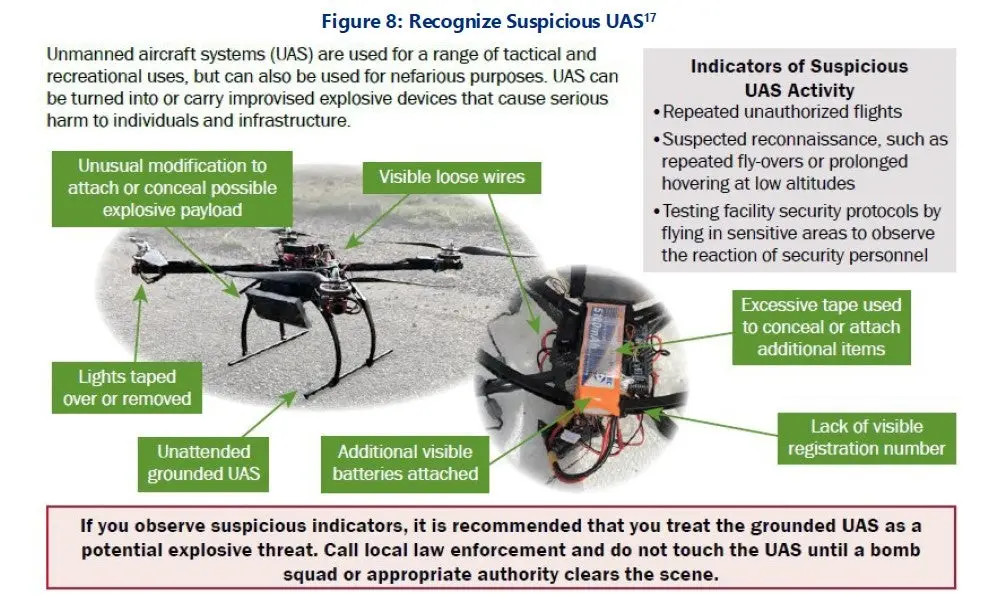
The incredibly low barrier to entry when it comes to obtaining and operating off-the-shelf drones has radically changed the air defense landscape in the last two decades, so much so that some U.S. military leaders have declared that the United States no longer has air superiority for the first time since the Korean War. While the U.S. military is developing a variety of new concepts and technologies to address the drone threat, many of them are still very much in their infancy and are not readily available outside of the armed forces.
When it comes to domestic drone threats, as the Department of Justice’s response to the Biden administration’s announcement of its new action plan, there are significant legal hurdles currently hampering the ability of authorities, especially below the Federal Government level, to respond to incidents at all. Concerns and other discussions about these legal barriers have appeared in other government publications regarding drone safety.
One 2020 report released by the Department of Homeland Security’s Cybersecurity and Infrastructure Security Agency, or CISA, noted that “although most agencies do not have the authority to disable, disrupt, or seize control of an unmanned aircraft, there are other effective risk reduction measures they may implement.” These measures CISA recommended at that time consisted largely of installing “No Drone Zone” signage, anti-drone netting, and fencing or blinds that prevent drones from seeing inside sensitive facilities. Notably, the only mention in the report of a way to take direct action against unmanned systems was to “coordinate with local law enforcement to request counter-UAS (c-UAS) capabilities through the DHS Interagency Request For Assistance Process,” underscoring kinds of hurdles that authorities face now when responding to incidents.
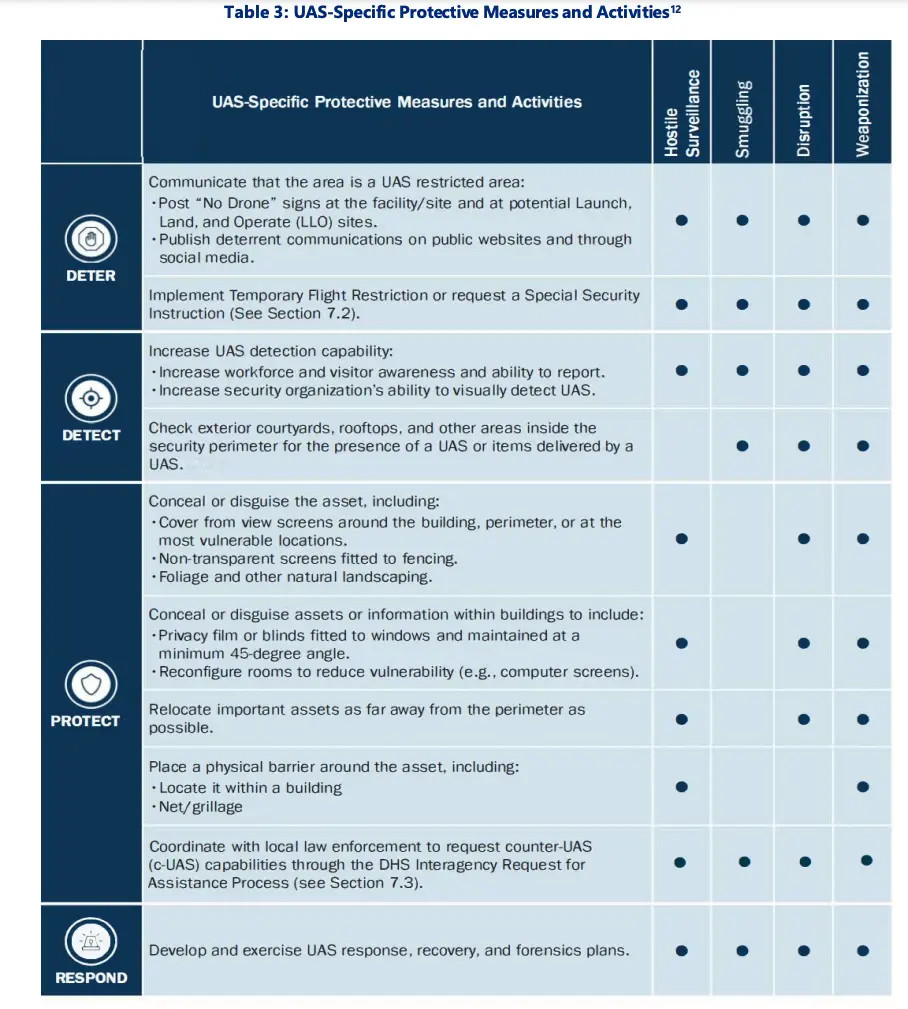
Similarly, documents related to the 2019 Palo Verde incident released through the Freedom of Information Act (FOIA) highlighted limits in what could be done at that time to respond to incidents immediately, as well as prosecute drone operators engaged in possible malicious activity. “I confirmed with the licensee that they have coordinated the use of this counter drone technology with FAA, and they informed me that this technology only locates the UAVs; it does not interfere with the flight pattern of those UAVs in any way,” an NRC Region IV Response Coordination Branch Intelligence Specialist, whose name was redacted, wrote in one Email.
“Since drones are aircraft and they are not violating a law, what is the action that can be taken legally if they locate the operator?” Mark Lombard, the Deputy Director of NRC’s Office of Nuclear Security and Incident Response, asked in another subsequent email. Clearly, there are legal loopholes and undefined statutes related to drone use that must be addressed before law enforcement agencies can effectively mitigate this threat.
The Biden administration’s move to standardize and strengthen the Federal government’s counter-UAS capabilities and protocols is not unwarranted. There have been years of inaction on the drone threat, both at the Federal Government level and by the military, and they are now starting to play catch up.
With the number of drones in circulation in the United States predicted to reach 2 million by 2024, we can expect to see the Federal Government enact more policies in the near term to address the growing threat posed by unmanned aerial systems.
Contact the author: Brett@TheDrive.com
